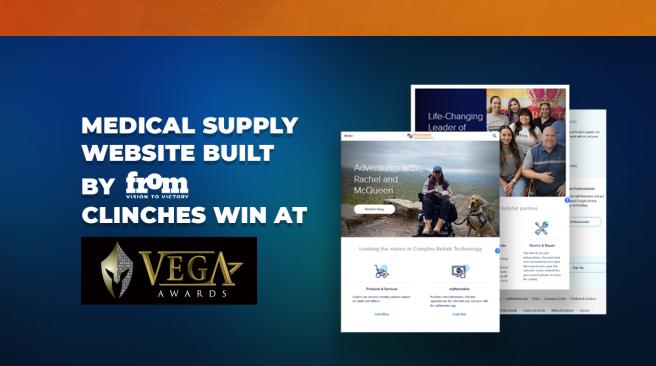Insights | By Howard Tiersky
How to Write a Digital Strategy
If I told you I had a document in my hand that was the new digital strategy for your company, what would you expect it to contain?
A list of projects? A "mission" statement? A technology vision? A competitive market analysis? A financial forecast?
One of the problems with the label "digital strategy" is that there's not a common understanding of what it actually means or should contain. Naturally, the needs vary by company, but what if I said I had one menu for a Chinese restaurant and one for an Italian restaurant? Of course, there would be some differences, but there would also be some similarities: both would contain a list of foods you can order and their prices.
While we know what to expect to see in a menu, what should we expect to find in a digital strategy?
We develop digital strategies for companies from media to retail to financial services, and we use a ten-chapter outline for our digital strategy documents. Starting from this point, we often customize, and I'd encourage you to do that as well. Consider this a cheat-sheet that, if it works for your organization, can form the basis for your digital strategy.
Chapter One: Our Current Situation
Describe your company's current situation vis a vis digital. Outline the digital touchpoints that currently exist, how recently they have been "remodeled," how you measure their performance and what feedback you receive from both customers and stakeholders. Neither exaggerate the problems nor sweep them under the rug. The idea is to present a clear, objective, and fact-based description of the current state. Ideally, cite specific stats such as conversion, ad revenue, usability testing results or other data-driven "evidence" for your position. Also, describe any obvious gaps in your digital landscape. If you have clarity on the reasons for some of the problems or gaps (technical issues, business process issues, etc.), then state these as well.
Chapter Two: The Customer and Competitive Landscape
Describe your customer segments succinctly. What is understood about their current needs? How have they changed? Ideally, cite evidence from market research. In particular, how have their channel/touchpoint preference and expectations been evolving? What does that suggest about what your brand needs to do to stay relevant? If you have data to support it, describe how the current digital ecosystem for your company impacts your customer's perception, behavior and purchase decisions (either positively or negatively — you may have examples of both).
Now take a look at competitors. Your customers are evaluating you against your competitive set; what are they offering regarding a digital experience? How does it differ from what your brand is doing? What success metrics do you have available to indicate how successful competitive efforts are? (remember not everything your competitor is doing differently is necessarily successful). Remember to look not just at your traditional large competitors, but also at smaller competitors who may not be taking a significant market share (yet) but who might be more nimble or creative. Look also at "comparative" brands. If you are a hotel, what are airlines doing? What is Uber or Amazon doing? And how are their latest innovations both creating new expectations your customers have for you and also highlighting opportunities for your industry to do something similar?
Chapter Three: Trends
Chapters One and Two describe the current state. Chapter Three is your space to forecast the future. What trends are likely to impact your customer and your industry over the next few years? I suggest focusing on a 2-3 year time horizon. In today's fast-moving world trying to forecast farther than that is too inaccurate. What kind of trends should you focus on? Certainly focus on digital trends, such as the shift to mobile or other digital technologies that may be relevant to your industry (wearables, VR, AR, chatbots, etc.). But also focus on trends that may not be inherently digital but which may have a significant impact in your industry over the next few years. These could be growth in China, the different priorities of the millennial generation, etc. Here is a detailed video on categories of trends to consider tracking in your business.
Chapter Four: Our Assets
Nothing in the outline of the first three chapters is inherently good news or bad news -- it’s just a journalistic perspective on your brand, your customers, and competitors- where they are today and where they are going. It’s not uncommon for it to be an inventory of all the ways you are behind and that can be a bit of a downer. This chapter is your opportunity to remind the reader of any untapped assets you may have that might be able to help you leap ahead. What kind of asset should you describe? Here are some ideas. Consider which apply in your situation:
-
Your brand — How is your brand viewed by customers? Even if you are behind the curve in digital, it takes a long time to build a trusted brand. That's worth a lot, and if you catch up, that brand may be a huge competitive weapon even against companies who seem to be ahead of you today.
-
Your content — Perhaps you have a backlog of content that is not being fully leveraged. A new digital strategy may enable you to tap value that is currently latent.
-
Technology — You might have some proprietary technology that, if connected to a stronger digital touchpoint, could enable you to bring capabilities to the market that would be difficult for others to match.
-
Your people and their skills — Your organization may be uniquely good at something. Perhaps there is a way to leverage that strength. Or you may have specific individuals whose talents aren’t fully leveraged but who could make a major difference if given the opportunity to drive new digital strategies.
-
Your scale, financial resources, partnership relationships, network of stores, licensed IP, etc. Companies have many other assets, far too many to list here. Try to inventory everything you have to work with and consider which other assets might have a place in developing a strategy that provides sustainable competitive differentiation.
Chapter Five: The Future Customer Journey
Chapter Five is where you describe your vision of the future. You have been setting up the rationale for change in the previous four chapters; this is where you propose your solution. Describe how the customer will interact with your brand differently in the future — what changes will be made to the different touchpoints? How does their journey play out from initial introduction to your brand, through the phases of initial interest and research, through their purchase decisions, experience of your product or service, problem resolution, and future re-purchase?
Describe your customer, their situation, and their priorities and tell a compelling story that rings the intuitive bell of the user that this future journey will be both far better for the customer and also lead to better business outcomes for the brand. Support the alignment with customer needs via research data where available.
One format for describing the customer journey is a roadmap, as described in this article.
However you describe it, your strategy should align with the three key priorities of a successful digital business.
Chapter Six: Money and Business Model
If you have done a good job in Chapter Five, you now have your reader or listener (if it’s a presentation) thinking, "Sounds great, but how much is this going to cost??" Chapter Six is where you lay out three things — roughly what implementing this strategy will cost, what your projections are for financial return, and how the business model under the new strategy changes, if at all.
Clarity around investment and returns is what separates digital strategies that sound good from ones that actually get done. After all, an ambitious digital strategy for a major brand is likely to be a substantial investment. Most of the time those at the CFO and CEO level making investment decisions of hat scale are not doing it because of the inherent "good" of digital, but because they expect a return that justifies the decision. You must help them see your story in the kind of financial language that they use to make all of their other decisions. Be sure to describe not only the total budget but how much you anticipate will be capital vs operating budget and what the cash flow timing looks like. You’ll want someone from your finance department to be involved in modeling this in spreadsheet form.
Chapter Seven: Technology
It’s quite likely that your new strategy will be closely tied to technology. In Chapter Seven describe the technologies that are needed. It’s not essential to describe hardcore "tech" details or reference specific software tools. Rather, the idea here is to describe the key requirements you will have of technology to achieve the strategy.
Chapter Eight: Business Process and Organization
Often a substantial digital transformation will change the way you do business. If so, then no doubt you will need to reconsider various business processes or parts of your organizational structure. Chapter Eight should describe the types of changes that may be needed.
Chapter Nine: Timeline and Challenges
In Chapter Nine, you lay out a detailed quarter by quarter plan of how you intend to proceed. In addition, be upfront about the assumptions, risks and anticipated challenges your strategy will face. It may seem like it would be better to keep quiet about possible risks, but actually, the opposite is true for two reasons. First, it adds credibility to your plan and process to show you're realistic about the possible roadblocks and are already thinking about how to avoid them. And second, when you get funded, and your project actually does encounter challenges it won’t be a shock to your stakeholders. Most major transformations encounter a lot of twists and turns, and you need not only the initial support but the sustained support of your key stakeholders. Having a frank conversation about the things that could go wrong in advance is planting the seeds for their support when you need it in the future.
Chapter Ten: The Cost of Failure
The last chapter addresses the question of what if we don't do it? Or what if we do it half-heartedly? Digital transformation projects inevitably involve risks. And really wouldn’t we all rather avoid risk? This last chapter is the time to describe the risks of not proceeding or not fully proceeding. How will this impact sales? How will it impact your brand? If you just delay a year or two and then proceed, how will that impact your ability to catch up to the market?
So there you are: ten chapters of your digital strategy (or at least a starting point). One final suggestion is to make the development of your strategy an inclusive process. These days an effective digital strategy touches every part of an organization, and people can be quite resistant to an outside "digital team" deciding their fate for them. Furthermore, I suggest you create an inclusive process around the finalization of your digital strategy outline before you begin the process of developing the strategy. To the point I began with, there is a risk that when you come back to your CMO or your CEO with "The Digital Strategy" they may be surprised by what is and what isn’t covered. You can use this outline as a starting discussion point to gauge their expectations and jointly agree on what the strategy actually needs to address so that the scope and structure of the strategy meets their expectations and you can focus on the substance.
Good luck strategizing and as always let us know if we can be of any help!












